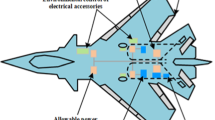Abstract
The lightweight, precision and high integration of modern electronic devices lead to a sharp increase in local heat flux, which poses a severe challenge to the traditional cooling technology. There is an urgent need to find a cooling method with high heat dissipation capacity and high efficiency to meet the requirements of today’s thermal management systems. Based on the Joule Thomson effect of carbon dioxide, a dry-ice spray cooling experimental system was established, and two types of array nozzles were designed and processed. The changing laws of cooling characteristics of tapered array nozzle and Laval array nozzle under different mass flow rates and different spray heights were discussed. The experimental results show that the heat transfer effect is the best when the spray mass flow rate is 36.29 g s−1 and the spray height is 2.5 cm, the corresponding critical heat flux is 452.03 W cm−2, the heat transfer coefficient is 36939.21 W m−2 °C−1, and the surface temperature of the simulated heat source is 37.64 °C. For Laval array nozzles and tapered array nozzles, the cooling performance of the former is better under the same experimental conditions, so the production of Laval array nozzles should be given priority in the selection of array nozzles with different parameters.














Similar content being viewed by others
References
Murshed SMS, Castro CAND. A critical review of traditional an emerging techniques and fluids for electronics cooling. Renew Sustain Energy Rev. 2017;78:821–33.
Silk EA, Golliher EL, Selvam RP. Spray cooling heat transfer: technology overview and assessment of future challenges for micro-gravity application. Energy Convers Manage. 2008;49(3):453–68.
Qian C, Gheitaghy AM, Fan J, Tang H, Sun B, Ye H, Zhang G. Thermal management on IGBT power electronic devices and modules. IEEE Access. 2018;6:12868–84.
Bostanci H, Altalidi SS, Nasrazadani S. Two-phase spray cooling with HFC-134a and HFO-1234yf on practical enhanced surfaces. Appl Therm Eng. 2018;131:150–8.
Toda S. A study of mist cooling: 1st report, experimental investigations on mist cooling by mist flow sprayed vertically on small and flat plates heated at high temperatures.
Rvbicki JR, Mudawar I. Single-phase and two-phase cooling characteristics of upward-facing and downward-facing sprays. Int J Heat Mass Transf. 2006;49(1–2):5–16.
Paris MR, Chow LC, Mathefdey ET. Surface roughness and its effects on the heat transfer mechanism in spray cooling. Exp Heat Transf. 1992;114:211–9.
Kim J. Spray cooling heat transfer: the state of the art. Int J Heat Fluid Flow. 2007;28(4):753–67.
Liu X, Liu J, Xue R, Chen L, Hou Y. Heat transfer optimization of R134a phase change spray cooling in a closed loop system. Exp Therm Fluid Sci. 2018;92:248–58.
Ashwood AC, Shedd TA. Spray cooling with mixtures of dielectric fluids, In: 23rd IEEE SEMI-THERM Symposium, 2007. p. 144–148.
Roebuck JR, Murrell TA, Miller EE. The Joule-Thomson effect in carbon dioxide. J Am Chem Soc. 2002;64(2):400–11.
Sherman R. Carbon dioxide snow cleaning. In: Developments in surface contamination and cleaning, 2nd ed. 2016. p. 695–716.
Kim D, Lee J. Experimental investigation of carbon dioxide dry-ice assisted jet impingement cooling performance. First Therm Fluids Eng Summer Conf. 2016;107:927–35.
Panão MRO, Costa JJ, Bernardo MRF. Thermal assessment of sublimation cooling with dry-ice sprays. Int J Heat Mass Transf. 2018;118:518–26.
Lin T-C, Shen Y-J, Wang M-R. Effects of superheat on characteristics of flashing spray and snow particles produced by expanding liquid carbon dioxide. J Aerosol Sci. 2013;61:27–35.
Panão MRO, Franco PA, Costa JJ. Effect of atomizer geometry on particle formation in dry-ice sprays. Int J Multiph Flow. 2020;130:103358.
Li JX, Li YZ, Li EH, Cai BY. Experimental investigation of spray-sublimation cooling system with CO2 dry-ice particles. Appl Therm Eng. 2020;174:115285.
Wae-Hayee M, Yeranee K, Piya I, et al. Heat transfer correlation of impinging jet array from pipe nozzle under fully developed flow. Appl Therm Eng. 2019;154:37–45.
Florschuetz LW, Truman CR, Metzger DE. Streamwise flow and heat transfer distributions for jet array impingement with crossflow. Heat Transf. 1981;103:337–42.
Nuntadusit C, Wae-hayee M. Local heat transfer characteristics of array impinging jets from elongated orifices. Int Commun Heat Mass Transf. 2012;39:1154–64.
Wae-hayee M, Tekasakul P, Nuntadusit C. Influence of nozzle arrangement on flow and heat transfer characteristics of arrays of circular impinging jets Songklanakarin. J Sci Technol. 2013;35:203–12.
Said MM, Dohina A, Rabie LH. Analytical and numerical calculation of the orifice minimum temperature due to Joule–Thomson effect. Fluid Mechanics. 2019;3(5):33.
Gao X, Li Ri. Effects of nozzle positioning on single-phase spray cooling. Int J Heat Mass Transf. 2017;115:1247–57.
Author information
Authors and Affiliations
Corresponding author
Additional information
Publisher's Note
Springer Nature remains neutral with regard to jurisdictional claims in published maps and institutional affiliations.
Rights and permissions
Springer Nature or its licensor (e.g. a society or other partner) holds exclusive rights to this article under a publishing agreement with the author(s) or other rightsholder(s); author self-archiving of the accepted manuscript version of this article is solely governed by the terms of such publishing agreement and applicable law.
About this article
Cite this article
Wang, W., Li, R., Ruan, Y. et al. Experimental research on sublimation spray cooling of dry-ice particles with array nozzle. J Therm Anal Calorim 148, 5733–5745 (2023). https://doi.org/10.1007/s10973-023-12111-6
Received:
Accepted:
Published:
Issue Date:
DOI: https://doi.org/10.1007/s10973-023-12111-6




